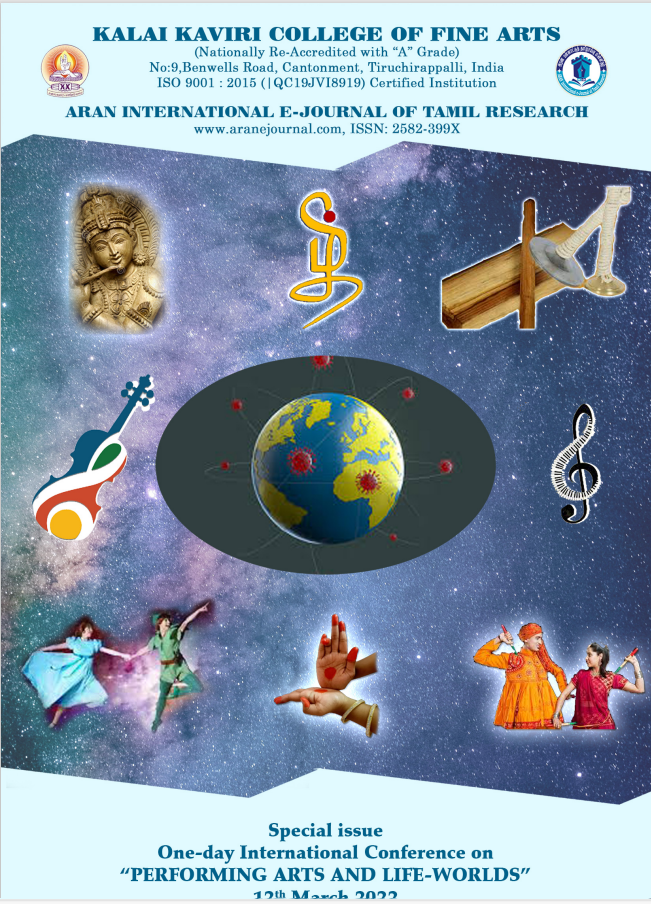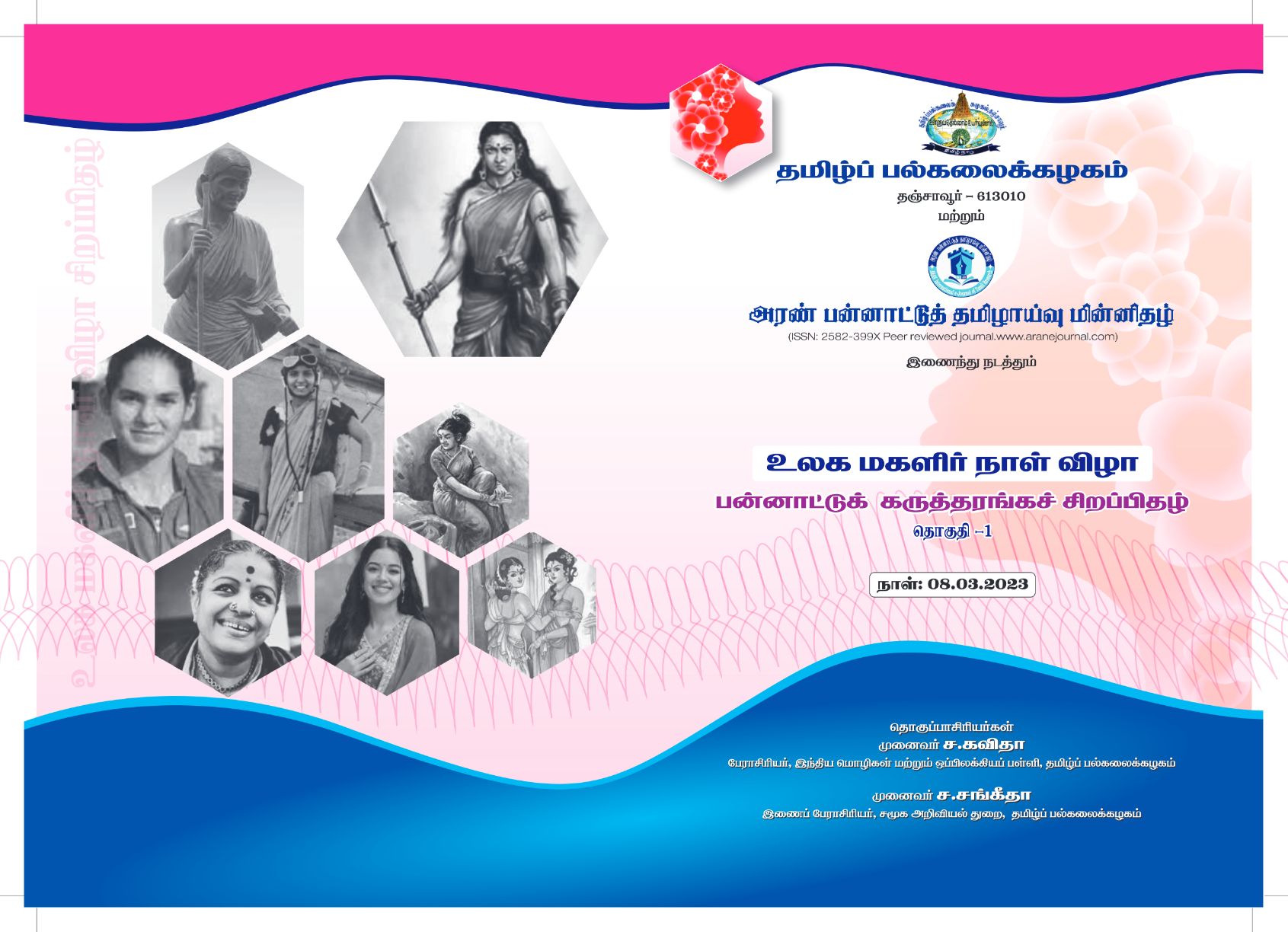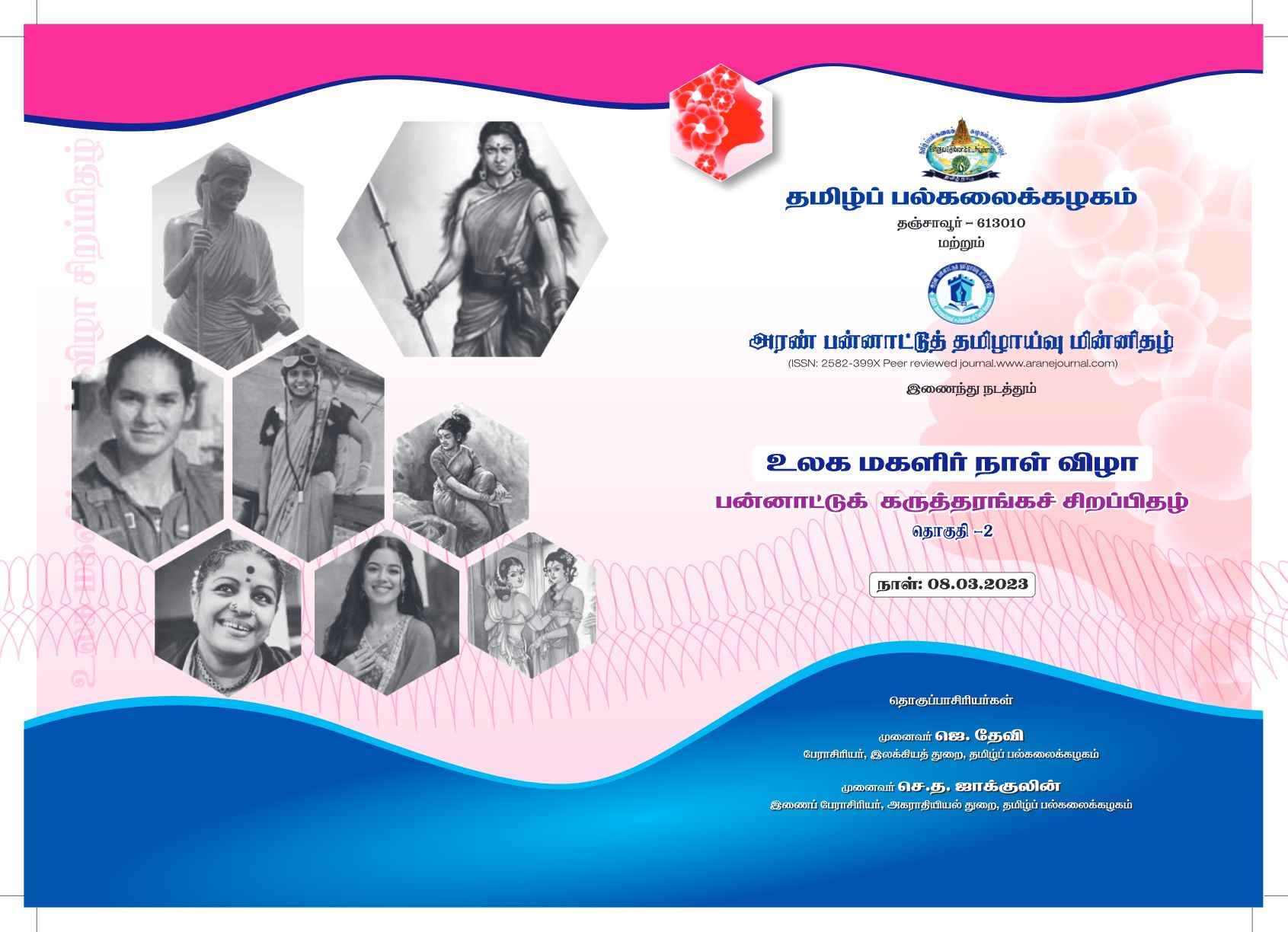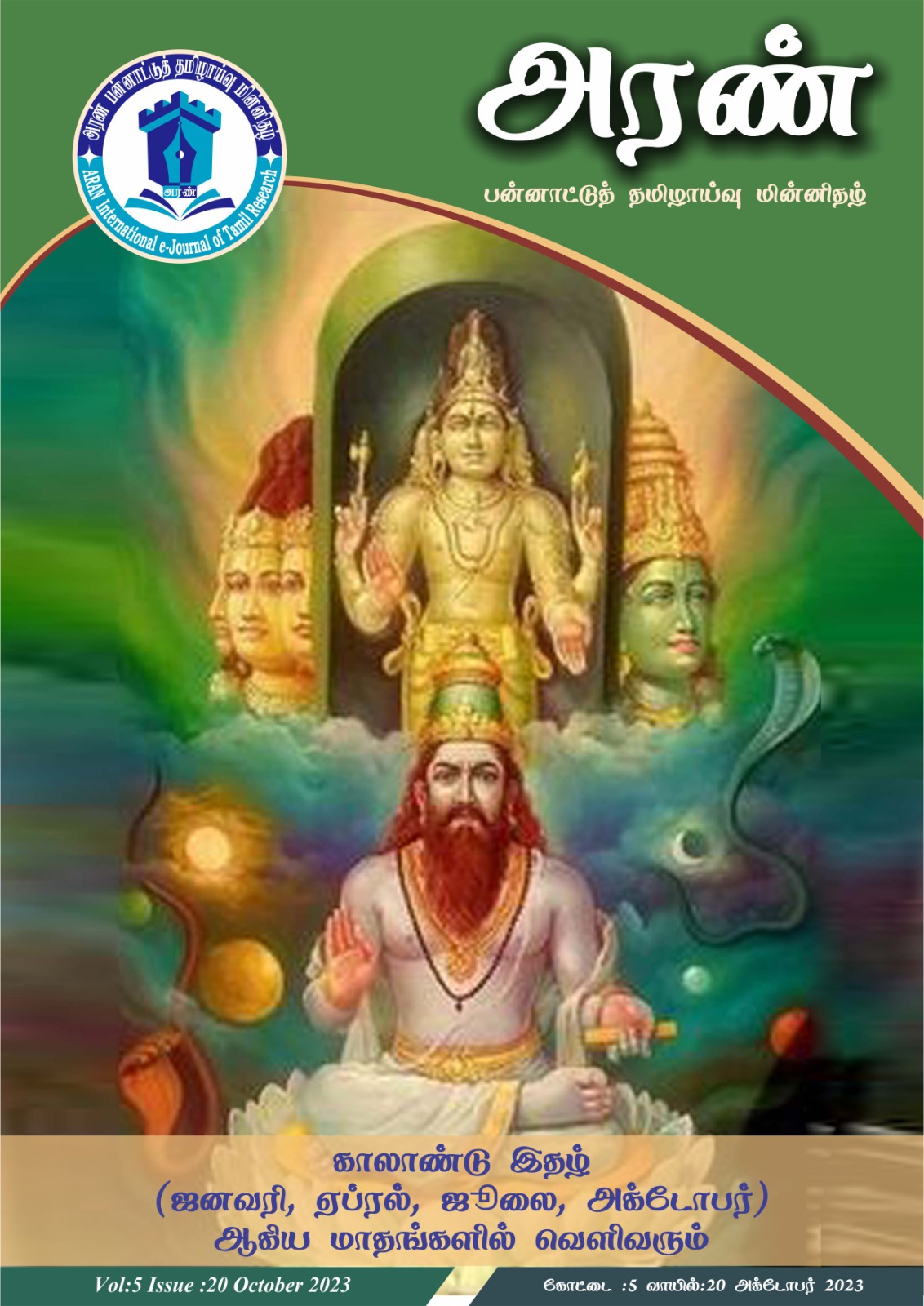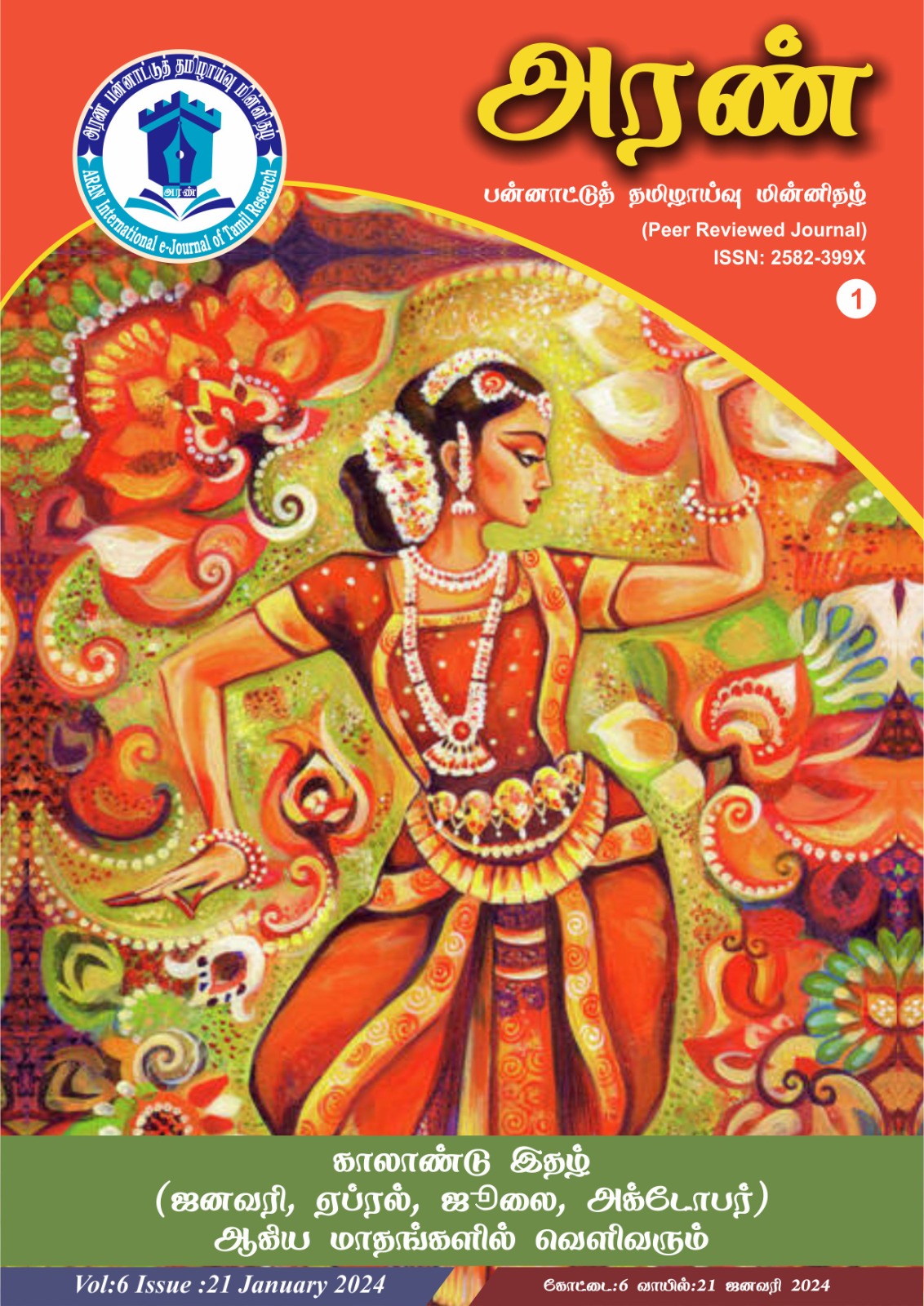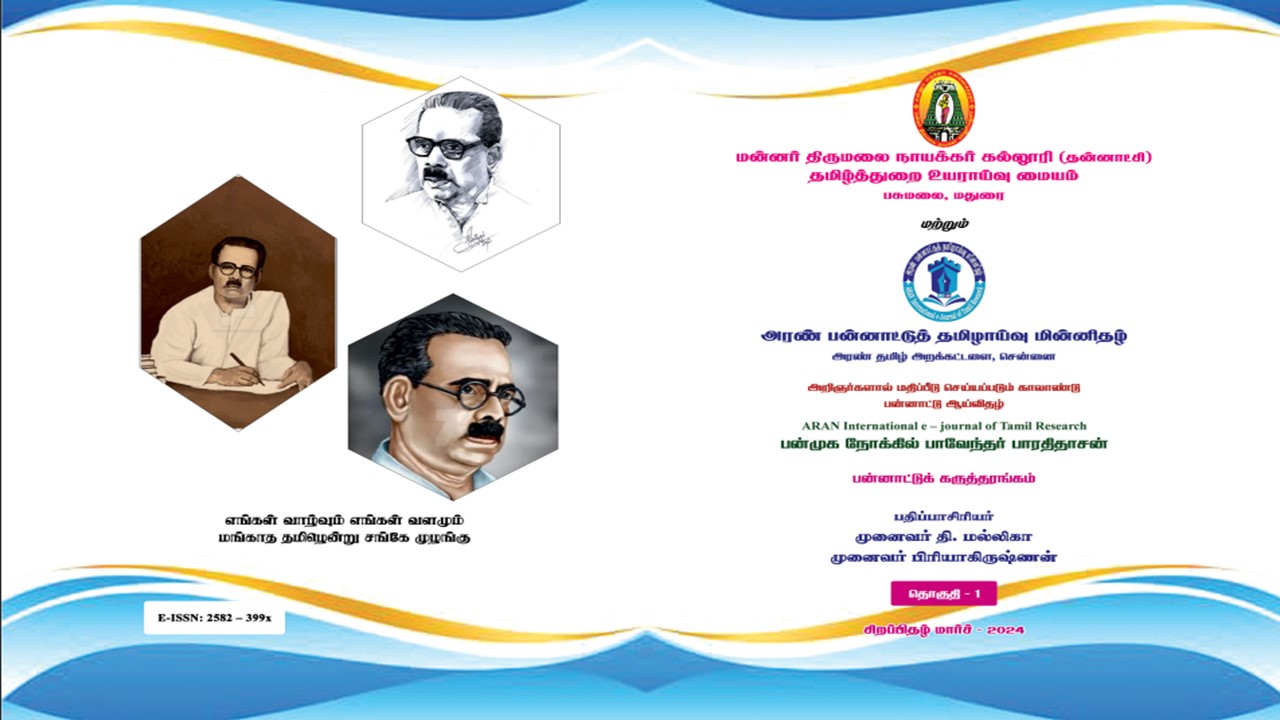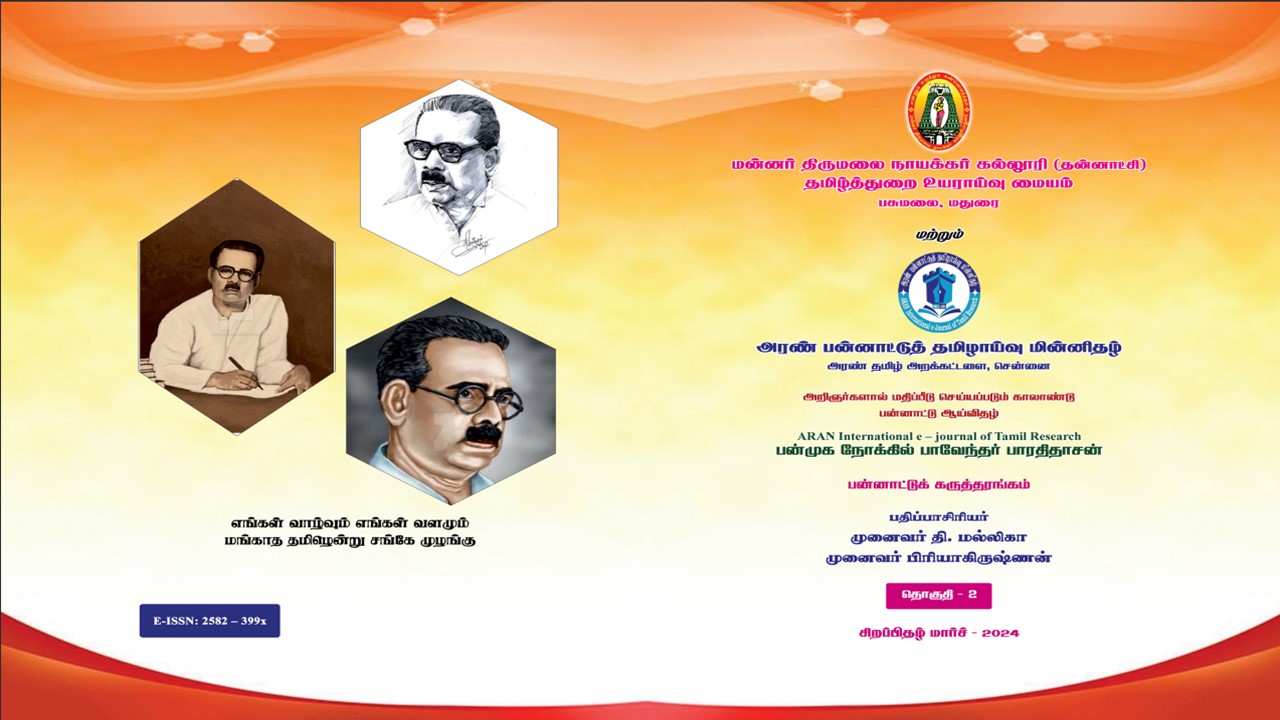JAINA SCULPTURES IN YAANAIMALAI AND SAMANARMALAI AT MADURAI
Abstract:
Sculpture is an artistic form. For thousands of years sculptures have been used by humans for various reasons. In ancient times, sculptures were an impressive art form and took a lot of time and hard work to craft. Art tells so much about the people or societies, as it were responsible for it. The subject matter of Indian sculptures was almost invariably abstracted human forms that were used to instruct people in the truths of the religions. Jainism is a religion that emerged during 6th Century BC. There are many archaeological evidences that point out that Jains had come to Madurai about two thousand years ago and preached their religion. One case in point is the hill near Nagamalai where remnants of the settlements of the Jain monks are still exist. In memory of their arrival at this place the place is still called as Samanar malai (Jain hill). True to its name the place still has several Jain remnants. Yaanaimalai hill gets its name “Yanaimalai” from its appearance which is like an Elephant sitting with its trunk stretched in front of it and tail behind it. One can see Jain remnants in this hill. In this paper, an attempt is made to reveal the sculptural potential of Jain sites at Yanaimalai and Samanarmalai in Madurai.
Key words: Sculptures, Samanarmalai, Yanaimalai, Jaina sculptures, Jainism, Parsavanatha, Komatisvara, Neminatha, Mahavira, Accanandhi, Thirthangara, Jainism in Madurai, Yakshi Ambika, Iyakki, Chettipodavu
About the Author:
S.M. Nageswari has completed M.phil in History. She is pursuing Ph.D in School of Historical studies at Madurai Kamaraj University. She worked as a part time lecturer in various reputed colleges in Tamilnadu and Bangalore. She is engaging in the study of Jainism in Madurai district. She has completed certificate course in Epigraphy and attended several seminars, conferences, training programmes related to the field.
Introduction:
Jainism was the earliest religion to reach the far south from the north. It was founded by Mahavira in North India in the sixth century BC. The tradition is that Chandra Gupta Maurya, the Mauryan emperor and the disciple of the Jaina sage Bhadrabahu led the Jain monks of North India to Sravanabelogola in Karnataka for preaching their religion in the South. The Jain monks spread to Chola, Chera, Pandya regions and to Lanka also. They built centres of worship and established Jaina centres. Among the greatest centres of Jainism the famous were Pallikkal, Karunagapalli, Nagercoil and Chitharal in the west coast and Madurai in the eastern region. For about twelve centuries from the 4th Century BC to 8th century AD., Jainism flourished in the Tamil Country. Establishing themselves on hills and terrains they developed caves into human habitats and built shrines, schools and monasteries on a larger scale.
MAP OF MADURAI DISTRICT
In the main hills of the Pandya kingdom which had Madurai as its centre, Jainism flourished from early times. There are fourteen centres around Madurai considered as Jain sites. Adding strength to this theory, there are rock-cut beds and Tamizhli inscriptions found in all those hills.
The contribution of Jains to architecture, sculpture, iconography and painting are seen from the Jain caves and temples that still exist. Cave temples were founded for worship or habitation. The caves for worship were known as Chaityas. The Chaithya caves comprise magnificent carvings of Jain art, figuring of scenes that depicting the episodes in their lives. Stone beds were carved for monks to recline.
Jains made images for Twenty four Thirthangaras and their attendants who are depicted either in padmasana pose or in standing pose. Denoting the Jaina’s victory over the three worlds, a triple umbrella (Mukkudai) described in Tamil works was placed above the heads of the Thirthangaras.
SAMANAR MALAI (Keezhakuyilkudi)
Nagamalai Pudhukotttai is situated at a distance of twelve km from Madurai on the Madurai – Theni National highway. To the south of Nagamalai Pudhukottai at a distance of two km, Samanar malai is situated. To the east of Samana Malai there is a village called Keezhakuyilkudi and to the west is called Melakkuyilkudi.
One can climb Samanar Malai through the path which is connecting the Chettipudavu hill situated at a distance of 200 feet. The word ‘Pudavu’ indicates a cave like place. There is a huge statue of Mahavira carved into the rock face in Chettipudavu in bas-relief, depicting him seated on three lions with attendants blowing him from either side, angels winged above and whorls of a Pipul Tree carved over it. Beneath the statue there is a description of the person who made it, in Vattezhuthu inscriptions. Since the ears of the Mahavira in this statue are elongated, the locals assumed it to be one of a Chettiar and started calling the place as Chettipudavu.
The Vattezhuthu stone inscription reads as, “Venbunaattu Kurandi Thirukkaattaam palli Kanakananthi patarar Abinantha padarar Avar Manaakkar Arimantala Padarar Abinandana padarar Seiviththa Thirumeni”. From this it is learnt that the Bas relief was done by Kurandi Thirukkaattaampalli students.
There is a naturally formed cavern in Chettipudavu. Inside the Cavern, three bas-reliefs are carved into the roof. The first and last of the sculptures are those of Iyakkiyars and the middle three are those of Tirthankarar seated under the Tri-parasol. The first Iyakki is depicted seated on a lion and confronting an Asura (Demon) seated on an elephant. The name of this Iyakki is Kottrakiriya. The Iyakki sculpture in the last is shown to be seated in the Sukasana posture with her left leg bent and right leg outstretched, with maids attending to her on either side. Her name is Ambika. Beneath all five of these sculptures, the names of the persons who had them made have been inscribed in Vattezhuththu.
“Swasthisri Ippallivudayagunasena Thevar Sattan Deiva Baladevar Seivicha Thirmeni”
“Swasthisri Venbu Naattu Kurandith Thirukkaattaampallik Gunasenathevar Maanaakkar Varthamaanap Pandithar Maanaakar Gunasenap Periyadikal Seiviththa Thirumeni”
“Swasthisri Ippalli Aalkinra Gunas enathevar Sattan Anthalaiyaan Kalakkudi Thannaich Chaarthi Seiviththa Tirumeni”
From this stone inscription it is learnt that Gunasenathevar, who held responsibility for Maadevi Perumpalli for a long time, and his disciples had to these sculptures made and guarded them.
The top of the hillock offers a panoramic view of Madurai, Tirupparamkundram and Nagamalai through a haze of cottony clouds. In Petchipallam one can see eight Tirthankarar sculptures and names of the persons who made them, inscribed in Vattezhuthtu. Sculptures of Bahubali, Parshuanadhar and Mukudainathar are seen here. There is a spring beneath this in whose waters the sculptures are reflected. The names of the persons who carved these sculptures have been inscribed in Vattezhuthtu in these stone inscriptions that date back to 9-10 A.D. From these inscriptions one can acquires about the sculptures made by the mother of Sage Acchanandhi, Gunasena Thevar, the head of the Palli and persons from Kurandi Thirukaatam Palli.
YANAIMALAI:
Yanaimalai is situated in Othakadai on the Melur Road at a distance of eight km from Madurai city. After entering Narasingam village, before reaching Yoganarasimmar cavern, on the big rock of the right side of the hill there are Jaina sculptures and Vattezhuthu inscriptions. On climbing steps, there appears a cavern-like portion in the rock. On the north slope of the hill galaxy of Jaina sculptures are carved which are datable to 9-10 CE. On the face of the rock bolder these images are carved and below them inscriptions in Vattezhuthu scripts are also engraved which reveals a detail by whom these sculptures were made and protected.
Among these sculptures, Mahavira, Parsvanatha-Neminatha, Bhagubali (Komathisvara) and Ambika Yakshi are carved. Well ground lime paste is applied above these sculptures and different colours are painted in wet condition. Mostly red, yellow, green colour pigments are used in these paintings. Only some of them have still retained their colours whereas most of them have disappeared. These paintings are comparable to that of Aritttpatti and Sitaannavasal paintings all are datable to 9th Century CE (Common Era – it begins with year 1 in the Gregorian calendar). These are standing as good illustrations for the early Pandyan painting art and also prove that Jains were not against fine arts.
The sculptures represented here which depict the puranic episodes of Jaina religion. Mahavira is simply shown as sitting in Arthapariyanka asana, with triple umbrella above his head. The story of Parsvanatha, is shown as standing straight and by his left side one demon Kamadan is shown as trying to pelt a big rock bolder on him. Dharanenthra, the yaksha of Parsvanatha spreads his canopy a five hooded snake above the head of Parsvanatha to save him from the attack of Kamada. Padmavathy, the Yakshi as well as the wife of Dharnendra tries to save her husband by holding a Vajra umbrella above the head of Dharmendra. The demon Kamada, who failed in his attempt finally surrenders to Parsvanatha and bowed down at his feet and put his head at the feet of Parsvanatha. This whole scene is depicted in a single panel very neatly.
Next, Bahubali figure is sculptured with his two sisters and finally Ambika Yakshi is neatly implemented. Below these sculptures totally eight Vattezhuthu inscriptions are inscribed. Among them one record attracts attention because it furnishes the name of Accananthi saint. He had caused to be cut one figure and it was protected by the Brahmin sabha of Narashingamangala i.e, the village behind the hillock. This record shows that, during this period 9th century CE (Common Era), no dispute between Jainism and Saivism prevailed, but religious harmony was maintained. During the 7th Century CE(Common Era) some disputes between both these religions occurred by which Jainism faced some set back. But after one or two centuries this turmoil scenario was completely changed and both Saivism and Jainism were equally patronized by the then Pandya kings. This miracle was possible in such a short period because of the matrimonial relationship between pandyas and gangas of thalakad. The relentless efforts of saint Accananthi also mentioned to this achievement.
The inscription below these sculptures reveals the department officials, nobles and individuals who patronized these sculptures. Still one individual stone image of a sitting Thirthangara, is installed on the main road of this village and worshipped as a local folk god Muniyandi by the local people. Stone inscription series like Puravuvari Thinaikalathaat Ratchai, Porkottu Karanathaar Ratchai and Parivaarapuravuvariaar Peram indicate that kings and officials supported Jainism. These Jaina monuments are protected by the Department of Archaeology, Government of Tamilnadu.
Conclusion:
Jainism has helped in enriching Indian culture, particularly in the fields of Literature, architecture, Sculpture. The Jains have made commendable contribution to almost every branch of learning. The Jains have erected exquisite temples either on hill topes or in secluded valleys. Sculpture plays a significant role in their artistic form. Visiting the Jain sites is an experience filled with great aesthetic satisfaction. One can engage in Heritage as well as Historic tourism in these potential Jain sites at Madurai. The bio-diversity and historical importance of these sites encourages tourists to learn more about the historical as well as natural variety which are existed in these monuments. Most of the Jain temples are extravagant in their use of carvings, both of figures and motifs. This richness in the terms of iconography is evident in most of the Jain sites too. The sculptures are very much useful to know about the history and artistic traditions of those periods.
Pictures of Samanar Malai:
Pictures of Yanaimalai:
End notes:
- Santhalingam, Jainism in Pandya Country, Tamilnadu Samanap Peravai, Vanthavasi, 2018.
- The Green Walk team, History of Madura-A Voyage into Jaina Antiquity, Madurai, 2014.
- Manoranjithamani, History of Tamilnadu upto 1565 AD, Dave-Beryal publications, Tirunelveli, 2012
- Rajayyan, Tamilnadu-A Real History, Ratna publications, Trivandrum, 2005.
Web References:
- https://www.google.com/thehindu.com/features/friday-review/history and culture/a jain temple on the hill/ece/amp
- https://tamilnadu-favtourism.blogspot.com/jain cave temple complex-yanaimalai.madurai

